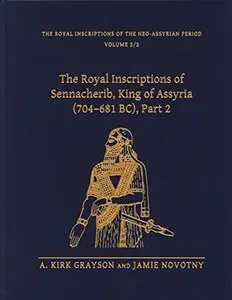The Royal Inscriptions of Sennacherib, King of Assyria (704-681 BC): Part 2 (Royal Inscriptions of the Neo-Assyrian Period) by A.Kirk Grayson and James Novotny
English | 2014 | ISBN: 1575062429 | 270 pages | PDF | 4,4 MB
English | 2014 | ISBN: 1575062429 | 270 pages | PDF | 4,4 MB
The Royal Inscriptions of Sennacherib, King of Assyria (704-681 BC), Part 2 (Royal Inscriptions of the Neo-Assyrian Period 3/2) provides reliable, up-to-date editions of 195 texts of Sennacherib, as well as 26 other late Neo-Assyrian inscriptions that might belong to this king and 2 inscriptions of his family (including one of his wives, Tashmetu-sharrat). The volume contains historical inscriptions on bull and lion colossi from Nineveh, rock reliefs, stone horizontal prisms, and clay cylinders and prisms from other cities under Sennacherib s authority (especially Ashur and Tarbisu); epigraphs on reliefs; and inscriptions on bricks, threshold slabs, door sockets, wall panels, stone blocks, beads, metal plating (including door bands); and drafts and copies of historical and building inscriptions written on clay tablets. Each text edition (with its English translation) is supplied with a brief introduction containing general information, a catalogue containing basic information about all exemplars, a commentary containing further technical information and notes, and a comprehensive bibliography.
RINAP 3/2 also includes: (1) a general introduction to the corpus of inscriptions and Sennacherib s numerous building activities in Assyria (especially construction at Ashur); (2) several photographs of objects inscribed with texts of Sennacherib; (3) indices of museum and excavation numbers and selected publications; and (4) indices of proper names (Personal Names; Geographic, Ethnic, and Tribal Names; Divine, Planet, and Star Names; Gate, Palace, Temple, and Wall Names; and Object Names).
The RINAP Project is under the direction of G. Frame (University of Pennsylvania) and is supported by the National Endowment for the Humanities.



